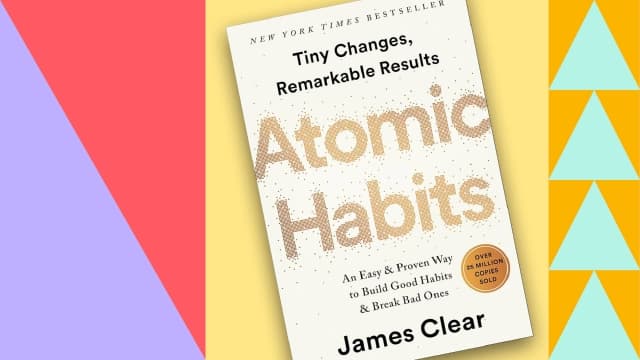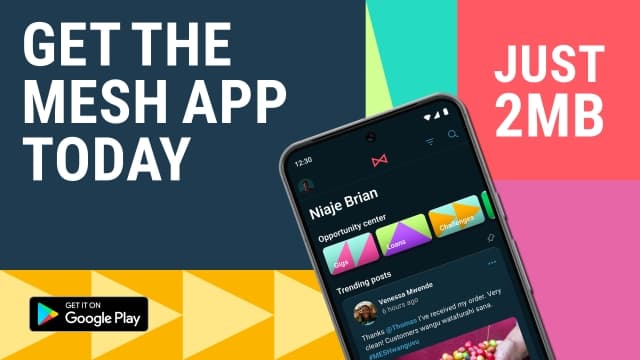I Tried Atomic Habits on My Money — Here’s What Happened

If you regularly hang out in the self-help corners of the internet, you’ve probably come across the rave surrounding James Clear’s Atomic Habits.
Thousands swear it’s helped them build healthy habits like exercising regularly, drinking more water, or even joining the 5 a.m. club. “This book will change your life!” they say.
But me? I wasn’t chasing fitness goals or miracle mornings. I wanted to know: what if I tested James Clear’s ideas on something we all wrestle with — money?
Here’s how those ideas played out in my world — and how you can borrow them for yours without having to read all 320 pages.

👉 Download the MESH app Google Playstore. Ni 2MB!
Idea 1: Make it Obvious (Cue)
The first thing Atomic Habits teaches is that habits don’t just appear out of nowhere — ziu-anza na kitu inaitwa “cue.”
A cue is simply a small trigger that tells your brain, “It’s time to do X.” Inaeza kua anything — something you see, smell, do, or even feel.
For example, some people can’t help but take a sip every time they hold their water bottle — doesn’t matter if they’re really thirsty or not.
For them, holding the bottle is the cue that tells their brain, “Time to take a sip.”
That’s basically how cues lead to actions.
James argues that ukitaka ku-turn any action into something you do regularly without even thinking about it too much, you need to make the cue obvious and easy to notice.
Because the more often you experience the cue, the more likely you are to repeat the action. And what happens when you do repeat an action for a long time? You guessed it: it becomes a habit.
Here’s how I applied that same logic to see if I can build a habit of saving every day:
I made my cue something I do every day and can’t avoid: locking my shop in the evening. Each time I turned the key, nlikua naeka 20 bob kwa M-Shwari savings.
It wasn’t about the amount; it was about tying saving to an everyday action I already did without fail.
Let's see how long I can keep this up — and if saving becomes automatic for me.
I’m actually willing to give this time because habits can take weeks or even months to form.
Idea 2. Make it Attractive (Craving)
The book says, “If a habit feels boring, you’ll ditch it. Make it exciting so you actually look forward to doing it.”
So what did I do?
Niliprint my kid’s school fees receipt nikaeka kwa wall. Every time I saved, I remembered: this is why I’m doing it.
Plus, nilijoin a chama-style WhatsApp group where we encourage each other to save.
Honestly, this made a noticeable difference. Saving became fun and easier to stick to.
Idea 3. Make it Easy (Response)
The book says, “Big scary goals kill motivation. Start small so the habit feels effortless.”
That’s why nilianza na small amount ya 20 bob. That’s less than a soda.
Later, I set up M-PESA auto-deductions so that the money moved automatically. This is very easy to do with Chumz.
I actually got the idea niki-review Chumz a while ago. You can check out the article here: An Honest Chumz Savings App Review.
To set up auto-savings, all you need to do is download the app, open your account, and follow these steps:
-
Log in and find the "create goals" section within the app
-
Set a goal in Chumz. For example, “school fees,” “new phone,” or “emergency fund.”
-
Get the Chumz PayBill number and your goal account name (found inside the app).
-
Dial *334# → M-PESA Ratiba → Create Standing Order.
-
Enter the Chumz PayBill as the recipient, add your amount (say KSh 100), and set how often you want it to run — daily, weekly, or monthly.
-
Confirm with your PIN, and boom — savings zitakua zinaingia Chumz
Idea 4. Make it Satisfying (Reward)
The book says: “The brain loves quick wins. Give yourself instant rewards so you keep going.”
So kila Friday, nlikua naangalia savings balance yangu to see if nimekua consistent.
If I had saved daily, I’d reward myself with a small treat — some chicken, soda, or even airtime.
And even without the treats, simply looking at my unbroken saving streak feels so satisfying.
Idea 5. Pursue an Identity Shift
The book says, “The strongest habits come from identity. Don’t just say “I want to save.” Say “I am a saver.”
Here’s how I applied that to my situation: Niliachha kusema, “I need to save.”
Instead, nilifanya saving part of my identity by thinking “I’m the kind of person who always puts something aside.”
It hit different.
Idea 6. Track Progress
The book says: “What you track grows. Seeing progress keeps you hooked.”
And honestly, this is so true if you actually put it into practice. Here’s how I did that:
Nilisaka calendar nikai-eka place iko easily accessible. Then, I’d tick off every day I saved.
There’s something about watching the streak build. It becomes so addictive, and you never want to break it.
The Result?
To be honest, I’m still testing this out. It’s working so far, but siwezi sema saving imekua habit bado.
I’m still training my brain to see it as something automatic, not another “chore” I have to push myself to do.
Even so, results ziko. For the first time in a long while, nimeeza ku-save consistently without making excuses.
Sure, it’s a small amount, but that’s not the point — the real win is forming a healthy habit of saving.
Whether you’re building an emergency fund or finally saving for that phone or laptop umekuwa ukitamani, applying James Clear’s ideas — plus a bit of discipline — can help you get there.
Pair that with simple tools like money market funds, and you can actually tick off a few items on your savings goals.
Still, this stuff takes work. You can’t just read a book and expect things to change bila effort.
Even good ideas are just that—ideas. Implementation is what makes a difference.